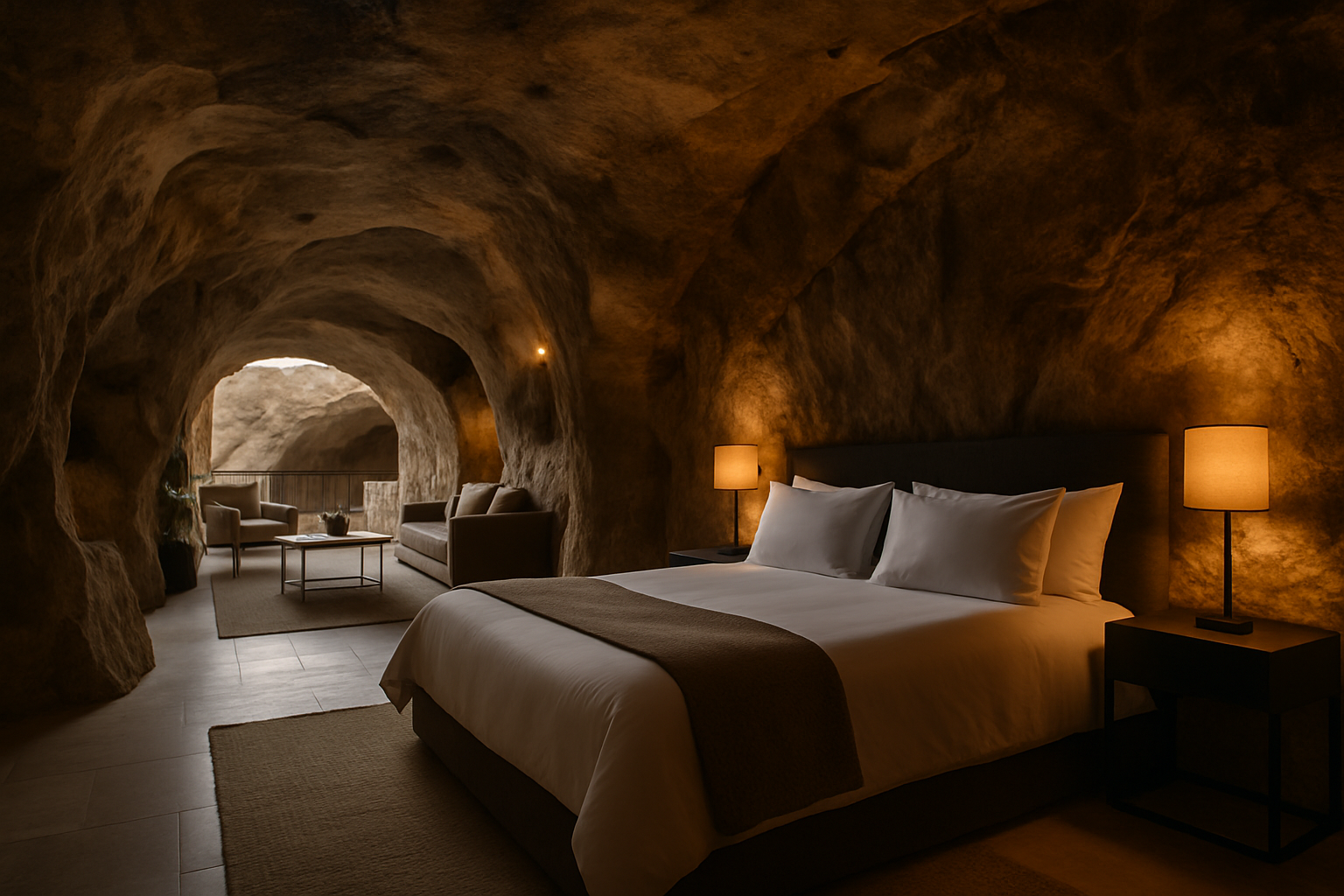Subterranean Odyssey: Exploring the World's Most Captivating Cave Hotels
Nestled beneath the Earth's surface, a new frontier of luxury accommodation awaits intrepid travelers. Cave hotels, carved into ancient rock formations, offer a unique blend of primordial charm and modern comfort. This emerging trend in hospitality is redefining the concept of experiential travel, allowing guests to immerse themselves in the raw beauty of nature while enjoying world-class amenities. From the otherworldly landscapes of Cappadocia to the limestone cliffs of Matera, these subterranean sanctuaries are captivating the imaginations of adventurers worldwide.

Cappadocia: The Birthplace of Modern Cave Hotels
Turkey’s Cappadocia region, with its otherworldly landscape of fairy chimneys and honeycombed hills, is the undisputed epicenter of the cave hotel phenomenon. Here, ancient cave dwellings have been meticulously restored and transformed into boutique accommodations that blend seamlessly with their surroundings. Guests can wake up in rooms carved directly into the soft volcanic rock, each with its own unique character and charm.
Matera: Italy’s Hidden Gem
In the southern Italian region of Basilicata, the city of Matera has become a beacon for cave hotel enthusiasts. Known for its Sassi districts, ancient cave dwellings that have been inhabited for over 9,000 years, Matera offers visitors a chance to step back in time while enjoying modern luxuries. Many of these cave hotels have been painstakingly restored to preserve their historical integrity while incorporating contemporary design elements.
Beyond the Classics: Emerging Cave Hotel Destinations
While Cappadocia and Matera may be the most well-known destinations for cave hotels, the trend is spreading to other parts of the world. In Spain’s Andalusia region, the town of Guadix boasts a thriving cave dwelling community, with some converted into charming bed and breakfasts. Meanwhile, in the Ozarks of Arkansas, ambitious hoteliers are transforming abandoned mines into subterranean resorts, offering a uniquely American take on the cave hotel concept.
The Challenges and Rewards of Cave Hotel Development
Creating a cave hotel is no small feat. Developers must navigate complex geological considerations, preservation regulations, and the logistical challenges of building in often remote locations. However, the rewards can be substantial. Cave hotels often command premium rates due to their uniqueness and limited availability. Moreover, they tend to attract a discerning clientele seeking authentic, one-of-a-kind experiences.
Sustainability and Cave Hotels: A Natural Partnership
One of the most compelling aspects of cave hotels is their inherent sustainability. The natural insulation provided by the surrounding rock helps maintain a stable temperature year-round, reducing the need for artificial heating and cooling. Many cave hotels also incorporate other eco-friendly features, such as rainwater harvesting systems and solar panels, further minimizing their environmental impact.
Insider Tips for Cave Hotel Enthusiasts
-
Book well in advance, especially for popular destinations like Cappadocia
-
Pack layers, as cave interiors can be cool even in warm climates
-
Bring a good camera to capture the unique play of light and shadow
-
Consider visiting during shoulder seasons for a more intimate experience
-
Ask about guided tours of the surrounding area to fully appreciate the geological context
-
Be prepared for potential Wi-Fi limitations due to thick rock walls
As the travel industry continues to evolve, cave hotels stand out as a fascinating blend of ancient heritage and modern luxury. These subterranean sanctuaries offer more than just a place to rest; they provide a portal to a world of wonder, where the boundaries between nature and architecture blur. For travelers seeking to escape the ordinary and embrace the extraordinary, a stay in a cave hotel promises an unforgettable journey into the heart of the Earth itself.





